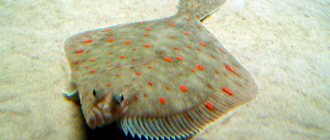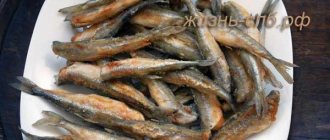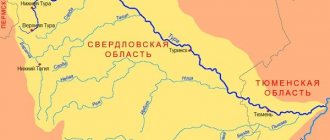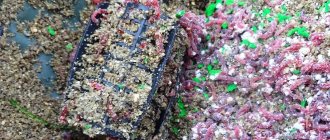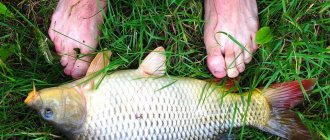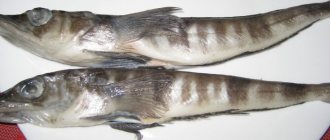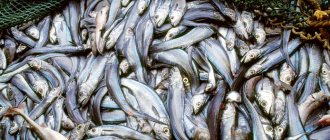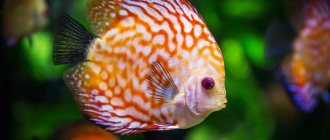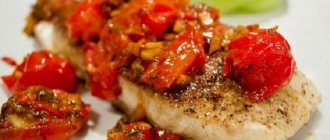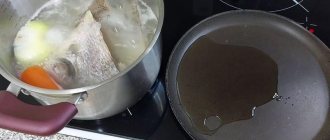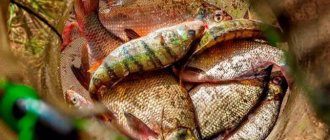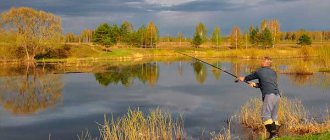Habitat
Where does the flounder fish live? Habitat: silty and shell (sandy) soils. Found at depths of up to 100 meters. A smaller subspecies lives in the Sea of Azov. In summer and winter, Kalkan prefers to stay at depth. And in autumn and spring, it floats up in shallow water. In summer, large young fish can be seen swimming near the bottom in beach areas.
Black Sea Kalkan
Flounder, which lives in the Black Sea, is called kalkan and is a very valuable and tasty fish. Moreover, it has commercial significance. For example, in Turkey, a kilogram of Kalkan costs at least fifteen dollars. In the middle of the last century, two to three tons of this fish were caught annually off the coast of Crimea. However, soon its reserves decreased significantly, which became the reason for the ban on its catching. Currently, there is no such ban, which leads to a decrease in its number. The fish are caught using multi-kilometer nets that block the migration routes of the Kalkan for spawning. This is the traditional way of catching it. This phenomenon is considered illegal, and recently such catching has become quite large-scale, which can lead to a critical decrease in the number of Kalkan in the Black Sea.
Kalkan lives not only in the Black and Azov Seas, but also enters the Mediterranean, as well as at the mouth of the Dnieper and Dniester. This species of flounder prefers sandy and silty soils, and does not fall below one hundred meters. Kalkan, which lives in the Sea of Azov, is called Azov. In principle, it is no different, only slightly smaller in size than the Black Sea.
Since this is a predatory fish, its diet includes mollusks, crustaceans, and small fish. Juveniles generally prefer crustaceans, while adults tend to eat fish and crabs.
Appearance
What does the Black Sea fish flounder look like? Its description is very different from other species. The Kalkan has a tall, elongated body, somewhat flattened, with a height of up to 80% of its own length. Sometimes it happens even more. The entire body is covered with bony tubercles. Like other relatives of this species (flounders), it is formed in the form of horizontally located sides, like a thick pancake.
The eyes of the Black Sea flounder are located on the upper (left) side. The fins on this side are asymmetrical. From below, white-bellied turbot. On top, where the eyes are located, it is brownish, with small reddish spots. The Kalkan has no scales at all, but at the slightest danger it can change color to match the color of the bottom. The jaws of this fish have bristly, even teeth. They are arranged in the form of ribbons. There are teeth even on the vomer.
Sea flounder
The salty environment is home to dozens of species of flat fish that thrive both on the shallow coastal shelf and at depths of several kilometers. They are characterized by a wide variation in size, body shape, fin color, sighted and blind sides.
Common sole
The basic taxon (Pleuronectes platessa), living in low- and high-salinity water (10-40%) at depths of 30-200 m, is an important commercial fish object. Inhabits the Eastern Atlantic, Mediterranean, White, Barents, Baltic and other seas. The main color is brown-green with reddish or orange spots. It grows up to 6-7 kg, maximum size up to 1 m. It has well-developed mimicry.
White-bellied flounder
Sea bottom fish that grows up to half a meter. The minimum commercial size is 21 cm. Features of appearance are an arched diluted lateral line, milky color of the blind side, brown or wheat-brown color of the eye side. There are two subspecies:
- Southern white-bellied flounder (Lepidopsetta bilineata mochigarei) lives in the coastal zone of Primorye and the Sea of Japan.
- Northern (Lepidopsetta bilineata bilineata) - in the waters of the Kamchatka, Okhotsk and Bering seas. Both form large populations in Peter the Great Bay (southern Primorsky Krai) and the Strait of Tartary, which separates Sakhalin from the mainland.
Yellowfin flounder
A cold-loving species (Limanda aspera) from the genus Limanda, which is common in the Sea of Okhotsk, Japan and Bering Sea. Fish are plentiful off the western coast of Kamchatka and Sakhalin. Prefers depths of 15-80 meters, where it adheres to sandy soils. Other common names for the taxon - spiny limanda and red flounder - are given because of the spiked scales and rounded brown body framed by yellow-golden fins. The maximum size is 45-50 cm with a weight of 0.9-1.0 kg.
Far Eastern flounder
Collective name for a dozen taxa of flat fish. In addition to the yellowfin, star and white-bellied forms, there are two-lined, long-snouted, proboscis, halibut, yellow-bellied, warty and others. It is the northern territories that provide the majority of the world's catch of flounder.
Halibut
Three genera represent 5 species living in the Atlantic and the extreme waters of the Pacific and Arctic Oceans (Barents, Okhotsk, Bering, Sea of Japan). The largest size is the white halibut (Pacific - Hippoglossus stenolepis, Atlantic - Hippoglossus stenolepis), which grows in length up to 450 cm and weighs 350 kg.
The smallest representative of the genus is the arrow-toothed halibut (American - Atheresthes stomias, Asian - Atheresthes evermanni), rarely gaining weight over 7-8 kg with a length of 70-80 cm. The main biological feature of the taxon includes scales, like on a sighted one (ctenoid with denticles along the edge ), and on the blind (cycloid with a smooth edge) sides. The black halibut (Reinhardtius hippoglossoides) has intermediate dimensions, for which the record is 35-40 kg with a height of 125-130 cm.
Big diamond
Another fish similar to flounder is a representative of the Kalkan family - the sea pheasant, or turbot (Scophthalmus maximus), with a large body without a covering of scales. Instead, nature has provided a protective mechanism in the form of many bone spines. Due to the angular shape of the fins and outstanding size (up to 1 meter in length), the fish is also known as the large diamondfish. Sea pheasant is a valuable commercial species and is widely reared on farms in Spain, Portugal, France, Iceland and China. The natural range of turbot flounder includes the Baltic, North, and Mediterranean seas.
Sole
The scientific name of the species is European solea (Solea solea). The heat-loving fish belongs to its own genus Soleidae and lives in the eastern Atlantic, Red, Mediterranean, South China, Baltic and Black Seas. Grows up to 65-70 cm with a weight of 2.5-3.0 kg. It has the status of a world delicacy thanks to its tender, tasty and juicy meat with a minimum of bones. The European salt is characterized by an elongated leaf-shaped body, which is complemented by an asymmetrical head with an oblique mouth and right-handed eyes. The sighted side is pale brown with many dark spots and covered with small scales.
Under the trade name “sea tongue,” dishonest sellers often sell not only fillets of less valuable flounder fish, but even pangasian catfish, which are generally representatives of freshwater ichthyofauna.
Reproduction
Basically, the reproductive organs of male Black Sea flounder mature at the age of 5 to 8 years, and females - from 6 to 11. Reproduction occurs at a depth of 25 to 70 meters in the open sea. Favorable temperature should be from 8 to 12 degrees. Reproduction begins in March-April and continues until June. In some places until the end of July. But the peak of spawning occurs in May.
One fish spawns up to thirteen million eggs. Black Sea flounder is the most prolific fish in the Black Sea. Despite the fact that the kalkan dies from sometimes unfavorable living conditions and is often destroyed by sea predators, the huge amount of spawned eggs fully compensates for these losses.
Habitat
Flounder is one of those fish that live on the seabed. Sometimes it can be found near river mouths. As a rule, it swims at depths of ten to two hundred meters, and in the Black and Mediterranean Sea its habitat expands to four hundred meters. In addition, this fish is also found off the coast of Scandinavia, Europe, Norway and North Africa.
Different species choose different depths to live, each of them adapts to certain conditions, preferring a certain soil.
Flounder (sea fish) buries itself in the sand in such an amazing way that it is completely invisible, and only its eyes remain on the surface. And they do it very quickly. Using wave-like movements of their bodies, they lift sand, then sink to the bottom, and silt settles on them, covering them from above.
Maturation of eggs
Kalkan eggs are transparent and spherical in shape. With a small drop of fat. The caviar of the Black Sea flounder is buoyant, stays close to the surface and is carried by the current. As a result, per 1 sq. m. water accounts for up to 10 eggs. Many of them die in polluted waters or are eaten by marine life. Therefore, out of half a million eggs, only 500 larvae mature.
For the first four days they have a yolk sac, which they feed on. On the fifth day, the mouth begins to form. But their vision is still poor, so they move very slowly. This is a critical period, as out of 500 larvae, only 25 survive.
After 15 or 20 days they become fry and settle to the bottom. Approximately 6 young individuals survive by autumn. Their length is initially 7 centimeters. They winter at a depth of 30 meters. In spring, young Kalkans move to the coastal zone. By this time, their length is already 10 centimeters, and by autumn it reaches 16 cm. At this age, the Black Sea flounder has no enemies except the dogfish shark.
The kalkan spends its second winter at a depth of 50 meters. By spring it becomes 20 centimeters long. At four years old, the Kalkan is already 35 centimeters. Some individuals begin to spawn already at this age.
BIOLOGY OF THE BLACK SEA KALKAN
The Black Sea Kalkan is a sedentary, large, bottom-dwelling predator. They usually lie on the bottom, covering the edges of their body with soil and adapting their color to its color. Juveniles live on sandy shallows, older ones live on sand and shell rocks, up to 10 m deep, and large ones live among mussels and phaseolina, up to 120 m deep.
Occurs from April to June (peak in April) in the open sea, at a depth of 25-30 and up to 70 m, at a water temperature of 8-12°. Large females begin spawning with the smallest males; at the end of spawning, the ratio becomes reversed.
The eggs are free-floating, transparent, their diameter is 1.2-1.3 mm; contains a red fat droplet, the diameter of which is 0.16-0.18 mm. The duration of egg development at a water temperature of 16-18° is three days. The larvae that have just emerged from the eggs are 2-2.8 mm long, transparent and symmetrical; live in the upper layers of water. Having reached a length of 12 mm, the larvae begin to become asymmetrical. Two months after hatching, usually in August, the larvae reach a length of 27-30 mm, both eyes are already on the left side; in appearance they become similar to adults and, having settled on the sand, begin a bottom life.
The Black Sea Kalkan is one of the largest flounders of the temperate seas of Europe. Its greatest length is about 1 m, weight up to 10 kg. In Black Sea catches, the most common fish are 50-87 cm in length. The Black Sea kalkan grows very slowly. Yearlings are 6.5-8.5 cm long. Males become sexually mature in the seventh to eighth year of life, and females in the ninth to eleventh year. The growth of the Black Sea Kalkan is very uneven, so a fish 65 cm long can be from 11 to 23 years old.
The Black Sea Kalkan is a predator, eating fish: anchovy, silverside, gobies, Black Sea haddock, and red mullet. Fingerlings eat juvenile anchovy, small gobies (Pomatoschistus microps), and small crustaceans (Gammarus locusta, Idothea baltica).
The large Kalkan has practically no enemies. Smaller ones are eaten by beluga and bottlenose dolphins.
For the first two months of life, the larvae lead a pelagic lifestyle in the open sea. Then the fry come to the shores, to the sandy bottom, where they live near the splash for two to three months. As they grow up, juveniles move away from the shores: yearlings and two-year-olds stay in the zone from 4-5 to 15-20 m depth, three-year-olds and five-year-olds - in the zone of 20-35 m, and adults older than five to six years - at depths up to 80 m In autumn, off the coast of Georgia, juveniles are found at a depth of 30-70 m, older individuals - somewhat deeper. In winter, some of the Kalkans come to the shores, gathering at depths of up to 15 m, the rest are grouped at depths from 50 to 80 m. In early spring, the Black Sea Kalkan moves to the shores and accumulates at depths from 10 to 70 m for spawning. In summer, most of it leaves from depths of less than 25-30 m to deeper places, and the number of males in catches at this time increases in direct proportion to the depth: from 18% at 15 m to 75% at 50 m. In autumn, in search of food , the Black Sea Kalkan is approaching the shores in all areas of the Black Sea.
On the brink of extinction
The Black Sea flounder, a photo of which is in this article, is a commercial and very valuable fish. She has a very tasty fillet. Therefore, in the 60s, a lot of fish were caught, and the number began to decline sharply. As a result, a ban was imposed on the fishing of Kalkan in 1986, as it was on the verge of extinction.
But the demand for this fish is huge, and the ban is not being observed now. Kalkan are caught in nets. They are even installed at the site of migration routes when fish go to spawn. Which greatly undermines the numbers of this valuable fish. In addition, other species, sometimes very rare, also fall into the nets of poachers.
Curious facts
Kalkan does not spawn annually. Ichthyologists can determine its age by the size of its ear pebbles. And the number of eggs can tell about the area, time and efficiency of spawning. The young Kalkan, hiding at the bottom, burrows into the ground with the help of its tail and fin. It makes wave-like movements with them, and it is covered with bottom soil. In the recess made, it becomes completely invisible.
Black Sea flounder has different wintering, feeding and spawning areas. It spawns along the shores and hides in the depths in summer. And in the fall it returns to the coast again. The older the individual, the greater the depth the fish descends. In one of the expeditions, submariners saw a Kalkan at a depth of over 10 thousand meters.
Black Sea flounder fishing began in the third century BC. In those days, women made necklaces from the thorns of this fish. A lot of fish were caught in ancient times.
Kalkan has no small bones. There are only large ones, on the ridge. Fat is concentrated mainly in the fin area. If you need low-fat meat, the fins are simply trimmed. And if this fish is baked in foil or a pot, then on the contrary, the fins must be left and no additional fat or oil can be added. Freshly frozen fish has a somewhat specific smell. But it cleans up easily. You just need to cut off the fins and pull the skin off the carcass.
Baltic Kalkan
Curonian Spit, flounder.
I have long dreamed of mastering surf casting gear (surf sea bottom)
and, finally, he persuaded his wife to go on vacation on the Curonian Spit, especially since his brother lives in Kaliningrad, whom he has not seen for a long time. I started with theory, studied the relevant topic at the Kaliningrad forum “old cordon” (many thanks to Evgeniy St. from the Kaliningrad region!). Gear in a case, a day on the train, three countries, six customs offices - and we were back in Russia, as if we had never left.
It immediately became clear that fish were present in this region - everything was designed accordingly
and archaeologists are not digging up birch bark letters.
There is a specialized institution,
where children are turned into fishermen in our style - half of the ground floor is occupied by a pub!
On Kos we settled in a wooden house.
A few words about what a Scythe is. A strip of sand in the sea about a kilometer wide and 98 km long, part in Russia, part in Lithuania, is planted with mountain pine, of course, a nature reserve. From the west there is the sea and a sandy beach all along, mostly deserted,
Useful properties of Kalkan
Black Sea flounder contains many useful substances and minerals for the human body. This fish is almost as valuable as the salmon family. Black Sea flounder contains Omega-3 polyunsaturated acids. Kalkan contains a whole bunch of microelements:
- sodium;
- potassium;
- cobalt;
- phosphorus;
- iodine;
- molybdenum;
- chlorine;
- sulfur;
- calcium;
- zinc;
- magnesium.
Fish also contains a number of useful amino acids that help regulate cholesterol levels:
- threonine;
- glycine;
- serine;
- aspartic;
- glutamine
This fish contains a large amount of vitamins. Vitamin A gives a person vitality and saturates with energy. It also strengthens the immune system and promotes faster healing of wounds. Vitamin B has a beneficial effect on the nervous system and improves brain function. Kalkan is a low-calorie fish, therefore ideal for diets. Vitamin C prevents inflammation and infections. And vitamin E slows down the aging of cells and improves their nutrition, strengthens blood vessels.
Thanks to these valuable components, the growth of cancer cells is prevented and the risk of obesity and diabetes is reduced.
